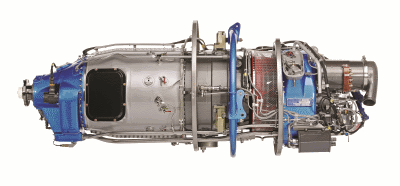Wed, Aug 18, 2021
AD 2021-15-10 Prompted By Several Reports Of Engine Gas Generator Speed (Ng) Rollbacks
The FAA is adopting a new airworthiness directive (AD) for all GE Aviation Czech s.r.o. (GEAC) H75-200, H80-100, and H80-200 model turboprop engines.

This AD was prompted by several reports of engine gas generator speed (Ng) rollbacks occurring below idle on GEAC H75-200, H80-100, and H80-200 model turboprop engines. This AD requires an inspection of a certain part number (P/N) fuel control unit (FCU) and, if deficiencies are detected, replacement of the FCU with a part eligible for installation. The FAA is issuing this AD to address the unsafe condition on these products. This AD is effective September 21, 2021.
Supplementary Information: The FAA issued a notice of proposed rulemaking (NPRM) to amend 14 CFR part 39 by adding an AD that would apply to all GEAC H75-200, H80-100, and H80-200 model turboprop engines. The NPRM published in the Federal Register on April 20, 2021 (86 FR 20465). The NPRM was prompted by several reports of engine gas generator speed (Ng) rollbacks occurring below idle on GEAC H75-200, H80-100, and H80-200 model turboprop engines. The NPRM proposed to require an inspection of a certain P/N FCU and, if deficiencies are detected, replacement of the FCU with a part eligible for installation. The FAA is issuing this AD to address the unsafe condition on these products.
The European Union Aviation Safety Agency (EASA), which is the Technical Agent for the Member States of the European Community, has issued EASA AD 2020-0082, dated April 1, 2020 (referred to after this as “the MCAI”), to address the unsafe condition on these products.
The MCAI states:
- Several occurrences have been reported of engine gas generator speed (Ng) rollbacks below idle on engines equipped with an affected part.
- The investigation determined that, during these events, the engine control lever (ECL) was set to idle, and identified as contributing factors specific environmental temperatures, possibly in combination with a high power off-take. The idle setting may be used in flight, in particular during the approach phase.
- This condition, if not detected and corrected, may lead to loss of engine power and eventually, on a single engine aeroplane, possibly result in loss of control.
- To address this potential unsafe condition, GEAC issued the ASB providing applicable instructions.
You may obtain further information by examining the MCAI in the AD docket at https://www.regulations.gov by searching for and locating Docket No. FAA-2021-0316.
More News
Charted Visual Flight Procedure Approach An approach conducted while operating on an instrument flight rules (IFR) flight plan which authorizes the pilot of an aircraft to proceed >[...]
“When l became the Secretary of Defense, I committed to rebuild our military to match threats to capabilities. Drones are the biggest battlefield innovation in a generation, >[...]
Aero Linx: Stearman Restorers Association Welcome to the Stearman Restorers Association. The Stearman Restorers Association is an independent “Not for Profit” 501C-3 Co>[...]
Airplane Exhibited A Partial Loss Of Engine Power When It Was About Halfway Down The Runway Analysis: The pilot of the experimental amateur-built airplane was departing from his pr>[...]
The Flight Path Was Consistent With Low-Altitude Maneuvering On June 18, 2025, about 0922 mountain standard time, a Cessna A150L airplane, N6436F, was substantially damaged when it>[...]
 ANN's Daily Aero-Term (07.15.25): Charted Visual Flight Procedure Approach
ANN's Daily Aero-Term (07.15.25): Charted Visual Flight Procedure Approach Aero-News: Quote of the Day (07.15.25)
Aero-News: Quote of the Day (07.15.25) ANN's Daily Aero-Linx (07.15.25)
ANN's Daily Aero-Linx (07.15.25) NTSB Final Report: Kjelsrud Gary Kitfox
NTSB Final Report: Kjelsrud Gary Kitfox NTSB Prelim: Cessna A150L
NTSB Prelim: Cessna A150L



